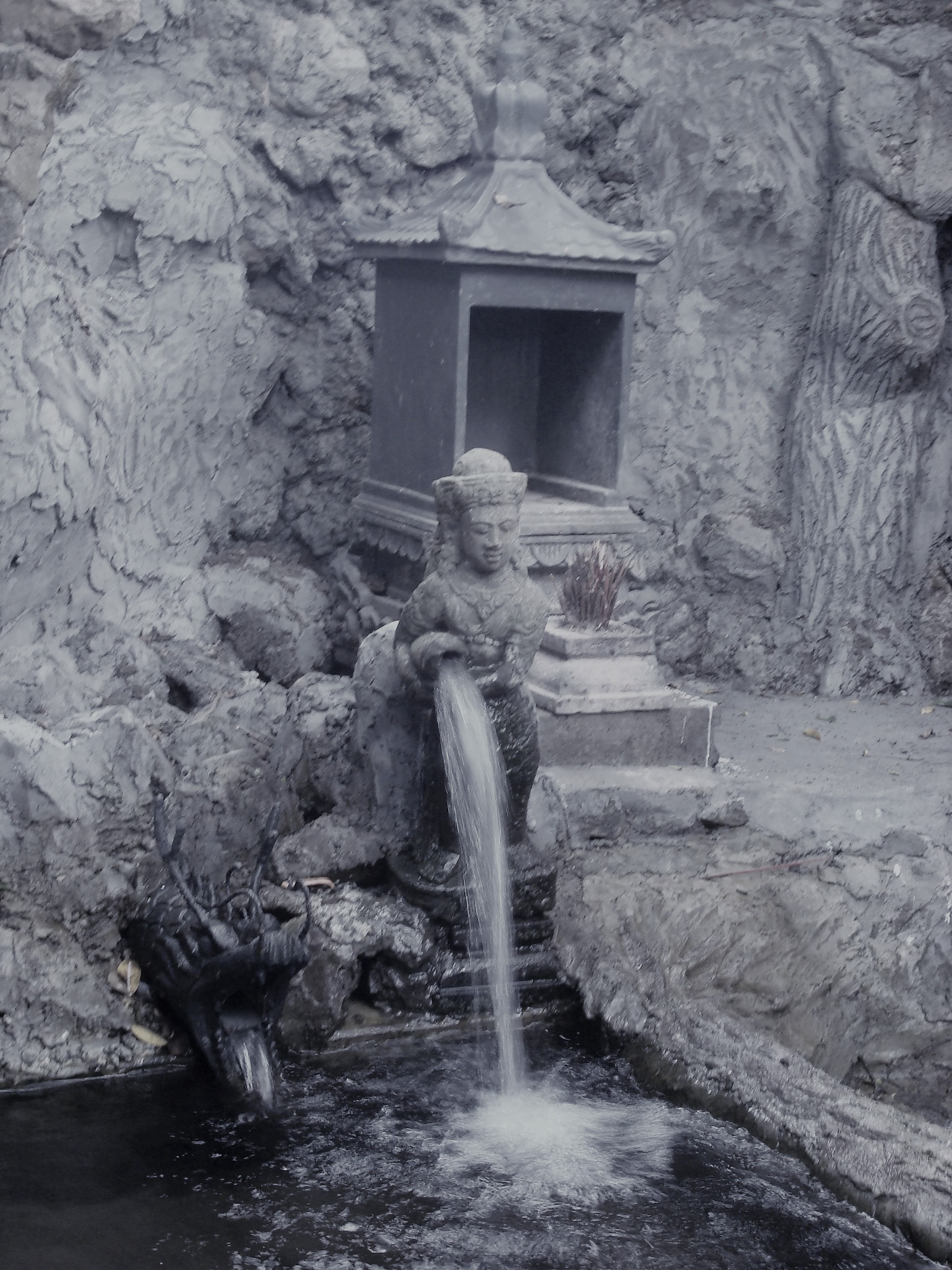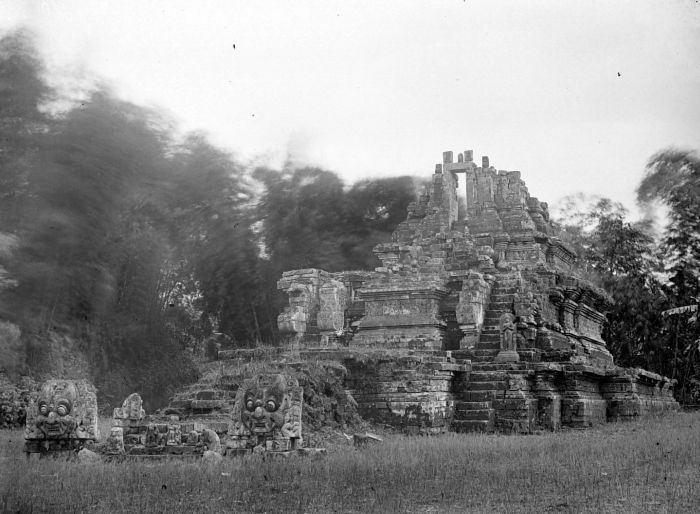|
Badut
Badut ( id, Candi Badut) is an 8th-century Hindu candi (temple) located in Tidar area around 5 kilometres west from the center of Malang city. This andesite stone structure is located in Karang Besuki village, Dau subdistrict, Malang Regency, East Java Indonesia. Despite its location in East Java, unlike other temples near Malang — such as Singosari and Kidal Temple, this temple follows the older Candi style of Central Java. Estimated was built in 760 CE making this temple the oldest temple in East Java. Etymology Popular beliefs connected the name "Badut" with Indonesian and Javanese term which means "clown". However, the name "Badut" suggested was derived from Sanskrit term ''Bha-dyut'' which refer to Canopus star or known as Agastya star. History Indonesian historian Purbatjaraka connected this temple with an inscription discovered in Merjosari village, the Dinoyo inscription. This inscription was written in Sanskrit using old Javanese script with ''chandrasengkala'' ... [...More Info...] [...Related Items...] OR: [Wikipedia] [Google] [Baidu] |
Candi Of Indonesia
A candi () is a Hindu or Buddhist temple in Indonesia, mostly built during the ''Zaman Hindu-Buddha'' or " Hindu-Buddhist period" between circa the 4th and 15th centuries. The ''Kamus Besar Bahasa Indonesia'' defines a ''candi'' as an ancient stone building used for worship, or for storing the ashes of cremated Hindu or Buddhist kings and priests. Indonesian archaeologists describe ''candis'' as sacred structures of Hindu and Buddhist heritage, used for religious rituals and ceremonies in Indonesia. However, ancient secular structures such as gates, urban ruins, pools and bathing places are often called ''candi'' too, while a shrine that specifically serves as a tomb is called a ''cungkup''. In Hindu Balinese architecture, the term ''candi'' refers to a stone or brick structure of single-celled shrine with portico, entrance and stairs, topped with pyramidal roof and located within a ''pura''. It is often modeled after East Javanese temples, and functions as a shrine to a certain ... [...More Info...] [...Related Items...] OR: [Wikipedia] [Google] [Baidu] |
Malang
Malang (; ) is a landlocked List of regencies and cities of Indonesia, city in the Indonesian Provinces of Indonesia, province of East Java. It has a history dating back to the age of Singhasari, Singhasari Kingdom. It is the second most populous city in the province, with a population of 820,043 at the 2010 Census and 843,810 at the 2020 Census.Badan Pusat Statistik, Jakarta, 2021. Its surrounding (the Greater Malang, metropolitan area) is home to 3,663,691 inhabitants in 2010, spread across two cities and 22 districts (21 in Malang Regency and one in Pasuruan Regency). Malang is the List of Indonesian cities by GDP, third largest city by economy in East Java, after Surabaya and Kediri (city), Kediri, with an estimated 2016 GDP at Indonesian rupiah, Rp. 44.30 trillion. The city is well known for its mild climate. During Dutch colonization, it was a popular destination for European residents. Even now, Malang still holds its position as a popular destination for international t ... [...More Info...] [...Related Items...] OR: [Wikipedia] [Google] [Baidu] |
Lingam
A lingam ( sa, लिङ्ग , lit. "sign, symbol or mark"), sometimes referred to as linga or Shiva linga, is an abstract or aniconic representation of the Hindu god Shiva in Shaivism. It is typically the primary ''murti'' or devotional image in Hindu temples dedicated to Shiva, also found in smaller shrines, or as self-manifested natural objects. It is often represented within a disc-shaped platform, the ''yoni'' – its feminine counterpart, consisting of a flat element, horizontal compared to the vertical lingam, and designed to allow liquid offerings to drain away for collection. Together, they symbolize the merging of microcosmos and macrocosmos, the divine eternal process of creation and regeneration, and the union of the feminine and the masculine that recreates all of existence. The original meaning of ''lingam'' as "sign" is used in Shvetashvatara Upanishad, which says "Shiva, the Supreme Lord, has no liūga", liuga ( sa, लिऊग ) meaning he is transcen ... [...More Info...] [...Related Items...] OR: [Wikipedia] [Google] [Baidu] |
Sumberawan
Sumberawan is a Buddhist stupa located in Toyomarto village, Sumberawan subdistrict, Malang Regency, East Java, Indonesia. The stupa is located in the highlands, on the southern slope of Mount Arjuno, surrounded by numerous Springs. It is located about 6 kilometres north of Singhasari temple. The stupa is traditionally linked to the historic Singhasari Kingdom that ruled the area circa 13th Century CE, however experts suggest that it dates from about the end of 14th century to the beginning of 15th century, during Majapahit period. Structure Sumberawan is quite unique, since it was the only Buddhist shrine in East Java that was built in the shape of stupa structure. In contrast to Buddhist temples in the region that built in typical candi architecture; such as nearby Singhasari, Jago, Brahu in Trowulan and Jabung temple in Paiton. The stupa consists of square base and cylindrical body of bell-shaped stupa, akin to Central Javanese Borobudur-style stupa, while the pinnacle ... [...More Info...] [...Related Items...] OR: [Wikipedia] [Google] [Baidu] |
Jago Temple
Jago temple ( Indonesian: ''Candi Jago'') is a 13th-century Hindu temple from the Singhasari kingdom in East Java, Indonesia, located about 22 km from Malang Malang (; ) is a landlocked List of regencies and cities of Indonesia, city in the Indonesian Provinces of Indonesia, province of East Java. It has a history dating back to the age of Singhasari, Singhasari Kingdom. It is the second most popul .... The Nagarakretagama written in 14th century mentioned this temple, as ''Jajaghu'' (English: "majestic"), as one of the temples visited by King Hayam Wuruk during his royal tour across East Java. The Singhasari King Vishnuvardhana was deified as Shiva, in the form of Bodhisattva Avalokitesvara, here after his death in 1268. The temple's bas-reliefs depict scenes from the ''Kunjarakarna'', ''Parthayajna'', ''Arjunavivaha'', and ''Krishnayana''. The name of Adityawarman appears in 1343 on an image of the Bodhisattva Manjusri. See also * Candi of Indonesia * ... [...More Info...] [...Related Items...] OR: [Wikipedia] [Google] [Baidu] |
Ganesha
Ganesha ( sa, गणेश, ), also known as Ganapati, Vinayaka, and Pillaiyar, is one of the best-known and most worshipped deities in the Hindu pantheon and is the Supreme God in Ganapatya sect. His image is found throughout India. Hindu denominations worship him regardless of affiliations. Devotion to Ganesha is widely diffused and extends to Jains and Buddhists and includes Nepal, Sri Lanka, Thailand, Indonesia (Java and Bali), Singapore, Malaysia, Philippines, and Bangladesh and in countries with large ethnic Indian populations including Fiji, Guyana, Mauritius, and Trinidad and Tobago. Although Ganesha has many attributes, he is readily identified by his elephant head. He is widely revered, more specifically, as the remover of obstacles and thought to bring good luck; the patron of arts and sciences; and the deva of intellect and wisdom. As the god of beginnings, he is honoured at the start of rites and ceremonies. Ganesha is also invoked as a patron of letters ... [...More Info...] [...Related Items...] OR: [Wikipedia] [Google] [Baidu] |
Durga
Durga ( sa, दुर्गा, ) is a major Hindu goddess, worshipped as a principal aspect of the mother goddess Mahadevi. She is associated with protection, strength, motherhood, destruction, and wars. Durga's legend centres around combating evils and demonic forces that threaten peace, prosperity, and dharma, representing the power of good over evil. Durga is believed to unleash her divine wrath against the wicked for the liberation of the oppressed, and entails destruction to empower creation. Durga is seen as a motherly figure and often depicted as a beautiful woman, riding a lion or tiger, with many arms each carrying a weapon and often defeating demons. She is widely worshipped by the followers of the goddess-centric sect, Shaktism, and has importance in other denominations like Shaivism and Vaishnavism. The most important texts of Shaktism, Devi Mahatmya, and Devi Bhagavata Purana, revere Devi (the Goddess) as the primordial creator of the universe and the Brah ... [...More Info...] [...Related Items...] OR: [Wikipedia] [Google] [Baidu] |
Nandi (mythology)
Nandi ( sa, नन्दि), also known as Nandikeshwara or Nandideva, is the bull vahana of the Hindu god Shiva. He is also the guardian deity of Kailash, the abode of Shiva. Almost all Shiva temples display stone-images of a seated Nandi, generally facing the main shrine. According to Saivite siddhantic tradition, he is considered as the chief guru of eight disciples of Nandinatha Sampradaya, namely, Sanaka, Sanatana, Sanandana, Sanatkumara, Tirumular, Vyagrapada, Patanjali, and Sivayoga Muni, who were sent in eight different directions, to spread the wisdom. The Cham Hindus of Vietnam believes that when they die, the Nandi will come and take their soul to the holy land of India from Vietnam. The Sanskrit word nandi ( sa, नन्दि) has the meaning of happy, joy, and satisfaction, the properties of divine guardian of Shiva- Nandi. It is recently documented, that the application of the name Nandi to the bull (Sanskrit: ''Vṛṣabha''), is in fact a development of r ... [...More Info...] [...Related Items...] OR: [Wikipedia] [Google] [Baidu] |
Mahakala
Mahākāla is a deity common to Hinduism and Tantric Buddhism. In Buddhism, Mahākāla is regarded as the sacred '' Dharmapāla'' ("Protector of the Dharma"), while in Hinduism, Mahākāla is a fierce manifestation of the Hindu god Shiva and the consort of the goddess Mahākālī; he most prominently appears in the ''Kalikula'' sect of Shaktism. Mahākāla also appears as a protector deity in Vajrayana, Chinese Esoteric, and Tibetan Buddhism (see Citipati), and also in the Chàn and Shingon traditions. He is known as ''Dàhēitiān'' and '' Daaih'hāktīn'' ( 大黑天) in Mandarin and Cantonese, ''Daeheukcheon'' (대흑천) in Korean, ''Đại Hắc Thiên'' in Vietnamese, and ''Daikokuten'' ( 大黒天) in Japanese. Etymology is a Sanskrit bahuvrihi of ' "great" and ' "time/death", which means "beyond time" or death. means "Great Black One". "Protector" is also used to refer specifically to Mahākāla. Description According to ''Shaktisamgama Tantra'', the spouse of ... [...More Info...] [...Related Items...] OR: [Wikipedia] [Google] [Baidu] |
Gebang
Gebang ( id, Candi Gebang) is an 8th-century Hindu temple located on the outskirts of Yogyakarta, Indonesia. The temple is located at Gebang hamlet, Wedomartani village, Ngemplak, Sleman Regency, Special Region of Yogyakarta. The temple was built during the Mataram Kingdom. There is no assuring historical backgrounds or inscription records concerning the temple. However the high proportional of the temple feet indicate that the temple was built in old period of Kingdom of Mataram, c. 730 to 800. Discovery In November 1936, a villager discovered a Ganesha statue. The Art and Archaeological Services (''Oudheid Dienst'') led an excavation and discovered that the Ganesha statue was the part of a small stone building. The archaeological excavation was conducted that year and discovered a temple ruin, the andesite stones that parts of the roof and the base is appeared to be intact. Besides the parts of the building, the excavation also yielded some artifacts such as potteries, statuette ... [...More Info...] [...Related Items...] OR: [Wikipedia] [Google] [Baidu] |






